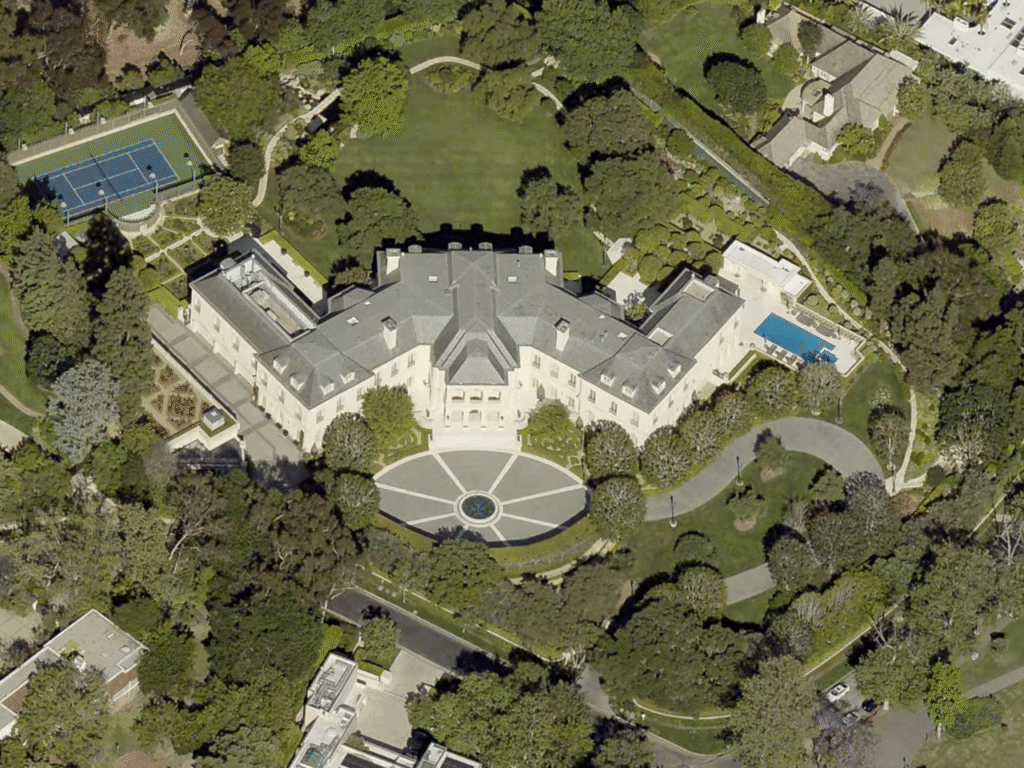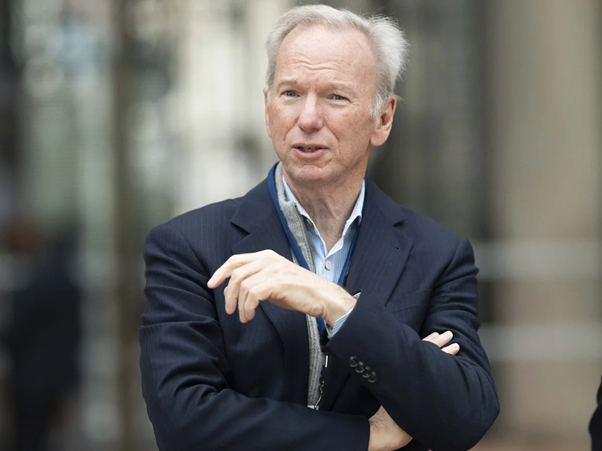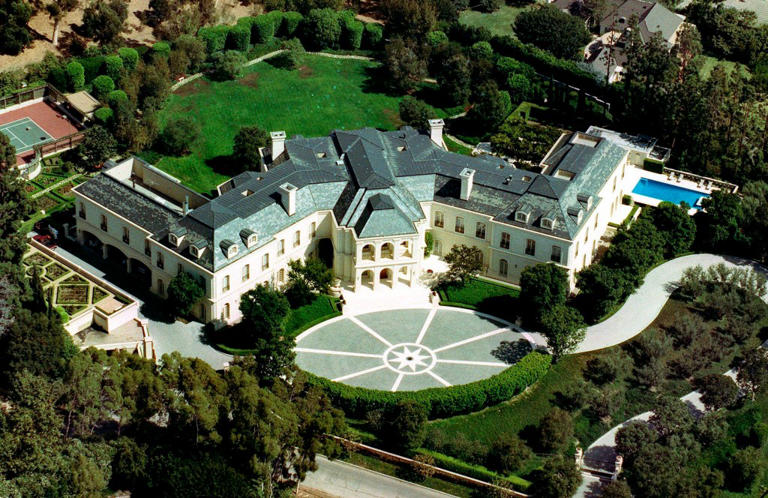In the world of the ultra-rich, there are purchases, and then there are statements. The recent acquisition of “The Manor”—the sprawling, legendary Los Angeles estate built by television king Aaron Spelling—by former Google CEO Eric Schmidt for a staggering $110 million is unequivocally a statement. It is a landmark transaction that represents more than just the exchange of a deed; it signifies the symbolic meeting of two immense and distinctly American fortunes, one forged in the analog glamour of 20th-century Hollywood, the other in the data-driven, digital revolution of Silicon Valley.
Schmidt, the seasoned executive who provided the “adult supervision” that scaled Google from a brilliant startup into a global colossus, is a titan of the new economy. The Manor is the ultimate monument to the old one. With a personal net worth currently sitting at $36 billion, Schmidt has become one of the world’s most prolific collectors of trophy real estate. But this latest purchase is his crowning jewel, an acquisition that tells a fascinating story about the man, the mansion, and the shifting geography of power and wealth in the 21st century.
The Architect of the Digital Age – The Rise of Eric Schmidt
To understand why a man like Eric Schmidt would buy The Manor, one must first understand the sheer scale of the empire he helped build. His journey to the pinnacle of the tech world was not one of a hoodie-clad wunderkind in a dorm room, but that of a seasoned, brilliant, and strategically-minded veteran of the industry.
Armed with a Ph.D. in computer science, Schmidt spent his early career at the heart of the burgeoning tech scene. He held senior roles at pioneering companies, serving as the Chief Technology Officer at Sun Microsystems and later as the CEO of Novell, a major software company. This background gave him a deep, technical understanding of the industry combined with the high-level corporate experience that would make him the perfect, and perhaps only, candidate for his next role.
In 2001, the venture capital backers of a promising, pre-IPO search engine called Google gave its brilliant young co-founders, Larry Page and Sergey Brin, a crucial directive: hire a CEO to help them run the company. The Stanford Ph.D. students were famously skeptical of the corporate world, but in Schmidt, they found a kindred spirit. He was not just a suit; he was a fellow engineer who could code, who shared their academic roots at Stanford, and who understood their audacious vision. On August 6, 2001, he officially became the CEO of Google.
What followed was one of the most successful decades in corporate history. Schmidt, Page, and Brin formed a powerful triumvirate. While the founders drove the innovative vision, Schmidt provided the crucial business acumen and executive leadership. He was the architect of Google’s corporate structure, guiding the company through its monumental 2004 IPO and overseeing its transformation into a global powerhouse that dominated not just search, but advertising, mobile computing, and video. He stepped down as CEO in 2011, but his influence continued as he served as the company’s chairman until 2017 and as a board member until 2019.
His financial rewards from this incredible run have been astronomical. He still owns an estimated 1% stake in Google’s parent company, Alphabet, a holding valued at around $23 billion. This is after having already cashed out over $7 billion worth of equity over the years. In his post-Google life, Schmidt has transitioned into a global statesman of technology, running investment firms and philanthropic foundations while advising governments on artificial intelligence and national security. This immense, liquid fortune has fueled his passion for collecting a portfolio of the world’s most extraordinary homes, a collection that now includes one of Hollywood’s most iconic estates.
The Monument to Hollywood Royalty – A History of The Manor
If Eric Schmidt’s fortune was built on algorithms and data, The Manor was built on drama, glamour, and television ratings. The property was commissioned in the late 1980s by Aaron Spelling, the undisputed king of primetime television, and his wife, Candy. At the time, Spelling was the most prolific and successful producer in Hollywood history, the man behind a seemingly endless string of monster hits like “Charlie’s Angels,” “The Love Boat,” “Dynasty,” “Beverly Hills, 90210,” and “Melrose Place”. He wanted a home that would be a physical manifestation of his larger-than-life success, a palace fit for Hollywood royalty.

The Spellings purchased a magnificent five-acre lot in the ultra-exclusive Holmby Hills neighborhood—razing the former home of screen legend Bing Crosby to make way for their vision. Completed in 1991, the result was a breathtaking, 56,500-square-foot mansion designed in the style of a French château, a residence even larger than the White House.
The scale of The Manor is legendary, a monument to the opulent excess of the era. Its amenities are less like those of a home and more like those of a private luxury resort. The residence contains 14 bedrooms and 27 bathrooms, but that is just the beginning. It also houses a professional screening room, a two-lane bowling alley, a full-service beauty salon, dedicated rooms for tanning and massages, and a humidity-controlled vault for storing silver. The property features a motor court with parking for 100 vehicles and, famously, a number of highly specialized rooms, including a gift-wrapping room. The home’s grand double staircase, inspired by the one in “Gone with the Wind,” became a symbol of its extravagant design. It was here that the Spellings raised their children, Randy and Tori Spelling.
A Storied Sales History
After Aaron Spelling’s death in 2006, Candy Spelling remained in the colossal home for several years before placing it on the market. In 2011, it was sold for $85 million cash to Petra Ecclestone, the 22-year-old daughter of Formula One billionaire Bernie Ecclestone. This sale was, at the time, one of the largest residential transactions in U.S. history.
Ecclestone, with a seemingly unlimited budget, immediately began a massive renovation, reportedly hiring a crew of 500 workers to transform the home’s interior. She stripped away Candy Spelling’s more traditional, floral-heavy design, replacing it with a high-gloss, modern European aesthetic defined by black marble, mirrored walls, and colossal custom chandeliers.
In 2019, Ecclestone sold the renovated property for a record-breaking $120 million, then the most expensive home sale ever in Los Angeles County. The buyer was shrouded in mystery, hidden behind a shell company and believed to be a Saudi national. After several years and a series of legal issues, including a bizarre phony deed scam, the property quietly came back on the market. This week, after being listed for $137.5 million and undergoing several price cuts, it found its new owner in Eric Schmidt for $110 million.
Conclusion: The New Custodians of Legacy
Eric Schmidt’s purchase of The Spelling Manor is far more than just another billionaire adding a trophy property to his collection. It is a symbolic moment that reflects a definitive shift in the landscape of American wealth and power.
The fortune that built The Manor was derived from the old world of media: controlling television networks, creating appointment viewing, and captivating a mass audience through a tangible, one-way broadcast medium. The fortune that just acquired it was derived from the new world: controlling information, creating algorithms, and captivating a global audience through an intangible, interactive digital network.
For a man like Schmidt, who now operates at the highest levels of global technology, finance, and policy, The Manor is more than a home; it is a private embassy, a West Coast hub befitting his status as a modern-day magnate. It is a place to host tech luminaries, philanthropists, and world leaders, all within a setting that carries the weight of Hollywood history. The acquisition marks a definitive moment where the new titans of the digital age have become the new custodians of the legendary monuments built by the titans of the last century, a clear signal of where the center of American influence now resides.


